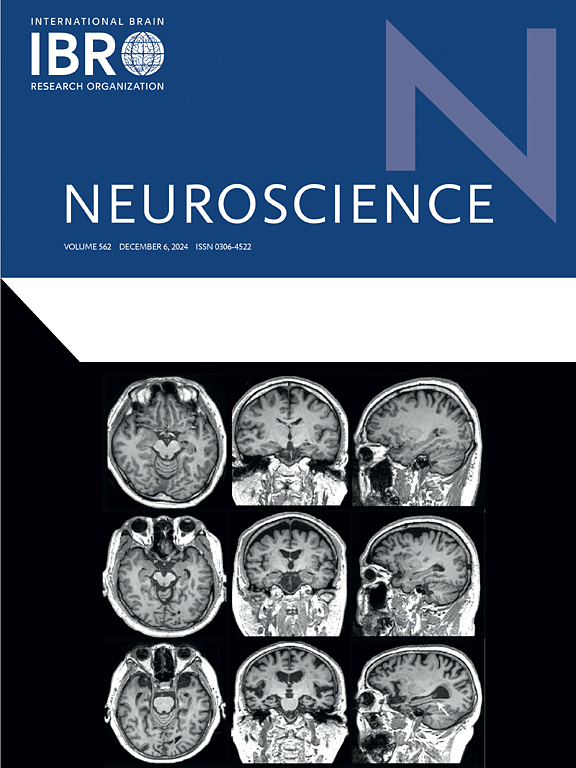与lnncgm36介导的COP1上调相关的神经炎症和脑缺血损伤的改善。
IF 2.8
3区 医学
Q2 NEUROSCIENCES
引用次数: 0
摘要
Schaftoside(SS)是一种从草中提取的生物活性化合物,在小胶质细胞中具有抗炎作用;然而,其在小鼠缺血性脑损伤中的作用尚不清楚。本研究旨在探讨猪草苷对小鼠大脑中动脉闭塞(MCAO)模型的神经保护作用,并阐明其分子机制。RNA测序结果显示,沙夫草苷显著上调长链非编码RNA Gm32496 (LncGm36),该基因在MCAO小鼠缺血半暗区显著下调。豚草苷通过上调lnncgm36减少MCAO小鼠的梗死面积,减轻脑水肿,改善神经系统预后。从机制上说,schafto甙诱导的LncGm36表达伴随着COP1水平的升高,COP1是参与神经炎症的关键调节因子。RNA下拉实验证实了lnncgm36和COP1之间的直接相互作用。lnncgm36或COP1的沉默可减弱猪草苷介导的抗炎小胶质极化和神经保护作用。综上所述,这些结果表明,schaftoside通过LncGm36/COP1通路促进小胶质细胞的抗炎表型转变,从而对缺血性脑损伤具有神经保护作用,表明其作为缺血性脑卒中治疗剂的潜力。本文章由计算机程序翻译,如有差异,请以英文原文为准。

Schaftoside restrains neuroinflammation and ameliorates cerebral ischemic injury associated with LncGm36 mediated COP1 upregulation
Schaftoside(SS), a bioactive compound derived from Herba Desmodii Styracifolii, has demonstrated anti-inflammatory properties in microglial cells; However, its role in ischemic brain injury in mice remains unclear. This study aimed to investigate the neuroprotective effects of schaftoside in a mouse model of middle cerebral artery occlusion (MCAO) and elucidate the underlying molecular mechanism. RNA sequencing revealed that schaftoside significantly upregulated the long noncoding RNA Gm32496 (LncGm36), which was prominently downregulated in the ischemic penumbra of MCAO mice. Administration of schaftoside reduced the infarct size, alleviated brain edema, and improved neurological outcomes in MCAO mice through LncGm36 upregulation. Mechanistically, schaftoside-induced LncGm36 expression was accompanied by elevated levels of COP1, a key regulator involved in neuroinflammation. RNA pull-down assays confirmed a direct interaction between LncGm36 and COP1. Silencing of either LncGm36 or COP1 attenuated schaftoside-mediated anti-inflammatory microglial polarization and neuroprotection. Collectively, these results indicate that schaftoside confers neuroprotection against ischemic brain injury by promoting an anti-inflammatory phenotypic shift of microglia through the LncGm36/COP1 pathway, suggesting its potential as a therapeutic agent for ischemic stroke.
求助全文
通过发布文献求助,成功后即可免费获取论文全文。
去求助
来源期刊

Neuroscience
医学-神经科学
CiteScore
6.20
自引率
0.00%
发文量
394
审稿时长
52 days
期刊介绍:
Neuroscience publishes papers describing the results of original research on any aspect of the scientific study of the nervous system. Any paper, however short, will be considered for publication provided that it reports significant, new and carefully confirmed findings with full experimental details.
 求助内容:
求助内容: 应助结果提醒方式:
应助结果提醒方式:


